Louis Sockalexis deserves proper recognition,
including all his lost legacies restored
by Ed Rice
April 17, 2016
DEDICATION: For Joe McLaughlin, long-time Sports Editor, Bangor Daily News, instrumental in helping to keep the memory of Sockalexis alive.
I have recently proposed and am actively investigating building a statue in Bangor to honor Louis Sockalexis; this would not only help to properly restore respect for a man far too long forgotten, but it would, at long last, help in my battle to correct the narrative to his history, long discredited by many both inside and outside the state of Maine.
In truth, this has been going on for more than one century.
Indeed, it was 100 years ago – on January 17, 1915, to be exact – the Cleveland Plain Dealer published an article and a very innocuous-for- its-time cartoon that announced the Cleveland Major League baseball team was officially adopting the nickname “Indians.”
Because Penobscot Louis Sockalexis, from Indian Island, Maine, was not specifically acknowledged for his role in first inspiring the nickname in that article…and because far too much has been wrongly deduced from that accompanying cartoon’s reference to the so-called “miracle” championship season of the 1914 Boston Braves… Sockalexis was cheated, 100 years ago, and continues to be cheated, time and again since then, from important legacies.
Cheated, even today, by everyone from popular, former-ESPN TV show commentator Keith Olbermann, to well-known Internet pundits like CSN Bay Area’s Ray Ratto (ESPN contributor) and NBC’s Craig Calcaterra (Hardball Talk Blog), to former senior writer at Sports Illustrated and former Kansas City Star columnist Joe Posnanski, and even to academicians, like Ellen Staurowsky. All have gotten Sock’s story wrong and, to date, only Posnanski has apologized.
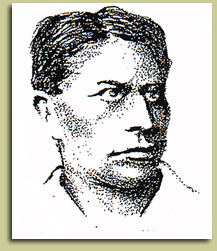
All the line drawings of Louis Sockalexis appearing on this web site come from Cleveland newspapers and national weekly sporting publications, published in 1897. The expense to reproduce actual photographs was too great in this era — so these publications used artists to capture the likeness of exceptional newsmakers.
Were it not for the discovery of an obscure editorial, over 90 years after the fact, there really wouldn’t be conclusive proof Sockalexis was remembered for being the inspiration for the Cleveland nickname. Frankly, baseball, as popular as it was as an amateur sport, wasn’t important enough to be the topic of an editorial in that time…and it probably explains why it wasn’t until very early in the 21 st century when Morris Eckhouse, a Society for American Baseball Research (SABR) member, found that vitally significant editorial in the Cleveland Plain Dealer that Sockalexis began to have an important legacy restored.
Native American pioneer players
As the author of Baseball’s First Indian, a biography of Sockalexis published in 2003, I remain heart-broken by how precious few individuals properly appreciate the historical figure of Louis Sockalexis. He was a man who almost certainly broke professional baseball’s color barrier (several black players, like Moses Fleetwood Walker and William Edward White, earlier attempted ruses or played ever-so- briefly… but all were immediately halted from enjoying continuing careers once they were identified for their race), a man who was definitively the first-known American Indian to play, a man who went through the exact same experience Jackie Robinson endured 50 years after him but never-ever gets any credit for doing so, and a man who most certainly did inspire the team’s nickname.
In recent decades, it seems, someone has come along and disputed the notion that Sockalexis is entitled to be recognized as “the first-known” Native American to play professional baseball. SABR researchers, like Peter Morris who identified 1870s player Tom Oran as the new “first” for instance, seem very eager to deny Sockalexis the title, so periodically there are 19 th century players like Joe Visner, James Madison Toy and Oran who have been offered as candidates to strip this title away.
Even then Baseball Hall of Fame librarian and respected author Lee Allen got into the act when he proclaimed, from his perch at the hall of fame in 1963, that Sockalexis was not deserving of such recognition and anointed Toy. His evidence? Letters from relatives of Toy’s in Beaver Falls, Pennsylvania, making the claim that their great grandfather was, indeed, part Sioux Indian. These relatives had no proof and even claimed that no death certificate existed for Toy because it had burned with all other vital statistics documents in a town hall fire a few years after Toy’s death.
A few years ago, this author investigated Toy on his own, after discovering Toy had not died in Beaver Falls but elsewhere in Pennsylvania. Securing a death certificate for Toy revealed that he was identified as “white” for his race at the time of his death. I published this information in the Bangor Daily News on January 26, 2006.
It was also during this period of time that I discovered the three basic tenets that must be present for any new candidate to ever supplant Sockalexis, the tenets that immediately eliminated “candidates” like Visner, Oran and Toy if only their champions had cared to look. If an individual has a Native American background in 19 th century America, he will (1) have his name appear on a U.S. census, with appropriate reservation address; (2) will be officially registered with his tribe; and (3) will claim association, proudly, with a tribe and a reservation.
Visner, Oran and Toy fail on all three counts, while evidence is specific for Sockalexis on the first two counts and overwhelming on the third.
Louis Francis Sockalexis was the sensation of professional baseball in 1897, featuring the skills of a five-tool player and a comparable charisma that earned him legendary status at any level he ever played. Indeed, Sockalexis was one of those rarest of talents, an athlete held in awe by his fellow athletes, who might be lucky to possess just one of his skills. He could: hit a baseball as far any slugger of that day; hit safely as frequently as the league’s top high average players; make spectacular fielding plays using his exceptional speed; throw the baseball prodigious distances with accuracy; be a base-stealing threat each and every time he reached base.
Baseball Hall of Fame’s disrespect
For decades, it has been acknowledged that Sockalexis was the model for Maine author Gilbert Patten’s arguably most famous, fictional baseball hero, Frank Merriwell of Yale; Patten managed a team that opposed the equally legendary-in- his-own- time Sockalexis as he terrorized another of Maine’s popular summer leagues in the early 1890s.
And, surely, it was the memory of Sockalexis that spurred legendary manager Connie Mack, who praised the Penobscot Indian in his autobiography, to sign Native American Charlie Bender, who then went on to a Hall of Fame career for Mack’s championship Philadelphia A’s. And just as surely, it was the image of Sockalexis that burned in famed New York Giants manager John McGraw, who played against Sockalexis in 1897, that led McGraw to sign Native Americans John Meyers and Jim Thorpe for his team.
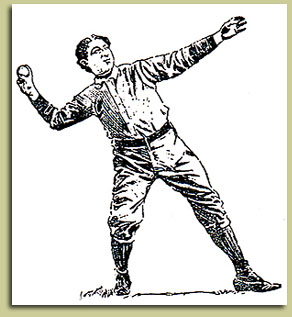 This important history of the pioneer American Indian baseball players, players who endured extreme racial prejudice and yet excelled, continues to be ignored by Jeff Idelson and his administration at the National Baseball Hall of Fame, even as the hall recognizes, with exhibits, its pioneer Afro-American players, its pioneer Hispanic/Latino players and its pioneer women players; in as shameful an excuse as has ever been uttered, a vice president for exhibitions and collections at the hall told a Bangor Daily News reporter not so long ago that the hall could not do such a tribute because it “did not have the space.”
This important history of the pioneer American Indian baseball players, players who endured extreme racial prejudice and yet excelled, continues to be ignored by Jeff Idelson and his administration at the National Baseball Hall of Fame, even as the hall recognizes, with exhibits, its pioneer Afro-American players, its pioneer Hispanic/Latino players and its pioneer women players; in as shameful an excuse as has ever been uttered, a vice president for exhibitions and collections at the hall told a Bangor Daily News reporter not so long ago that the hall could not do such a tribute because it “did not have the space.”
Thus, New York’s Baseball Hall of Fame continues on as if the American Indian players are invisible. Meanwhile, Cleveland’s Indians say they are committed to showing respect to the man who inspired its nickname while – incongruously – continuing use of the controversial, arguably most racist logo prominent in American sports today, Chief Wahoo. Imagine, if you will, if the Los Angeles Dodgers suddenly decided to show “honor” to Jackie Robinson by employing a logo featuring a Little Black Sambo caricature with kinky hair and oversized lips, wearing a glove or swinging a bat. How well would that idea find acceptance? Robinson’s memory surely wouldn’t be enhanced by such an acknowledgement; neither is Sockalexis’s.
Sometimes the exceptional athlete whose career is cut tragically short, like a Herb Score or a Tony Conigliaro, is best remembered through the respect he received from his peers than by the numbers listed in a record-book. In fact, if Sockalexis had any direct descendents (he doesn’t), they could easily make the case he played more than enough semi-professional summer league baseball games (many great college players ended their careers doing this) and college baseball games (when the college game was arguably more popular than the unstable, neophyte professional game) to make the case that Louis Sockalexis had already enjoyed a great career before he even came to Cleveland. Further, Sockalexis made the exact same kind of stoic stand against racial injustice that Robinson did, staring down his tormentors game after game through the first three months of his rookie season in 1897 and excelling at all phases of the game.
Baseball’s earliest days
So, why is he granted so little respect today? Baseball, indeed, was a very different matter in the 19 th century. Though extraordinarily popular with amateurs (and Civil War soldiers on both Union and Confederate sides), interest in it at a professional level was very slow in coming. Leagues popped up and failed. Get a couple of ambitious owners and a couple of cities with the desire to attract skilled players and, bingo, you had leagues, like the National League, the Western League or the Beer and Whiskey League (alcohol could be purchased by fans). They failed just as easily as they arose.
So, it’s no surprise that we really don’t consider professional baseball a solid enterprise until 1901, with the merging of the two, most prominent on-going leagues and the creation of a World Series. We think of all the earlier ventures as helter-skelter deals, hardly worthy of our attentions, with their rough-house play and vile language, daily volatile arguments largely spurred by the presence of only one umpire, and fielders who by rule could leave their gloves at their positions in the field (along with outfielders who sometimes planted a spare ball in the tall grass to use in emergency situations when they did not want to chase down the actual batted ball!).
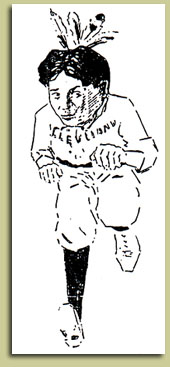
This drawing of Sockalexis running the bases in a headdress was published in a May 4, 1897 edition of the Cleveland Plain Dealer, the only publication still in existence from those where the line drawings were first exhibited.
Yet, without the records from these “professional” enterprises, we don’t have important contributions that matter to us to this very day. We don’t have Sock’s teammate, pitcher Cy Young, and his astounding career record of 511 wins…if we don’t count all his 19 th century victories. And we don’t have the yardstick to truly appreciate what Joe DiMaggio’s 56-game hitting streak means, if we don’t have the previous record – Wee Willie Keeler’s 44-game streak, set in Sock’s rookie season of 1897 – to judge it by.
I look at the origins of the nickname Sockalexis “inspired” at great length in my book. Here’s the short version: Nicknames were a capricious matter in these early days; with merchandise and programs and yearbooks still many years away, it really didn’t matter what a team’s nickname was from year to year. Yes, some teams, early on, settled on nicknames that stuck, like Baltimore’s Orioles or New York’s Giants. But most, like Boston, went through monikers like the Beaneaters and the Pilgrims, before arriving at a permanent nickname (Boston became the Red Stockings or Red Sox in 1908).
First known as the Forest Citys, the Cleveland team became the Spiders in 1889 and the Indians in 1897, followed by the Exiles or Misfits in 1899, a season of record ignominious achievement when the team lost a still-record 134 games. In the early 1900s the team was nicknamed the Blues or Bluebirds, for the color of their jerseys, and then the Bronchos. Finally, following a fan contest in 1903, the team adopted the nickname of “Naps,” in recognition of the popularity of Napoleon “Nap” Lajoie, the club’s playing captain and future Hall of Famer.
Origin of Cleveland’s nickname
The fact of the matter is it was Louis Sockalexis’s mere presence at Cleveland spring training in 1897 that inspired the local sports writers to join in the outright, prejudicial hoopla, dropping the nickname “Spiders” and dubbing the club “Indians” in their newspaper accounts in exhibition games in March. This was surely in recognition of the circus-like atmosphere the appearance of the so-called “full-blooded” (he wasn’t) Indian Sockalexis was going to create all around the league.
However, when Sockalexis was spectacular over the course of the first three months of the season (third-leading hitter in the entire league, featuring several long home runs in the so-called “dead ball” era, 16 stolen bases and well-publicized spectacular catches and awe-inspiring throws to throw out baserunners), he made the nickname into something of a racial, backhanded compliment.
Newspaper verbiage was flat-out racist, with Sockalexis frequently called “a savage” and often chided in the most derogatory of stereotypic terms. Take a look at his game-by- game critiques, and any empathetic reader will come to recognize how all alone Sockalexis was and how begrudgingly he won respect from that press, his fellow players and fans in every city of the league.
Unfortunately, his weakness for alcohol limited his stay to only parts of three seasons, 1897-99, and a total of just 94 games. Yet, the legacy of the nickname “Indians” survived even as the team explored other candidates over the next few years, with newspapers in other league cities still using the nickname “Indians” for the team no matter what that season’s moniker happened to be.
When Lajoie left the team at the end of the 1914 season to finish out his career where it began (Philadelphia), Cleveland owner Charlie Somers was left to solve the dilemma of how to terminate the no-longer appropriate nickname of “Naps.” He asked representatives of the four newspapers covering the team in Cleveland at the time to come up with a new nickname, one Somers hoped could end the revolving door of temporary ones.
The four editors settled on “Indians,” although Sockalexis was not mentioned in any of the news accounts or that large cartoon in the Cleveland Plain Dealer, announcing the adoption of the new name.
Frankly, the problem is even murkier than all of this; it revolves around whether the language “in honor of” is appropriate, with regard to the nickname “Indians” and how it pertains specifically to Sockalexis. In my book, I had to conclude this owes to author Franklin Lewis and his team history on the Cleveland Indians, published in 1949.
Author Lewis leaves dilemma
It was Lewis who seems to be the earliest writer to set down in print that, at the time of the 1915 discussion, a fan had approached one of the Cleveland newspaper editors and said the new nickname should be the Indians. Lewis quoted the fan as telling the editor, this should be done “in honor of” Sockalexis. The problem? Well, Lewis begins this account traveling down a wrong track, stating the process was really “a fan contest.” Further, there is no attribution whatsoever about where Lewis himself is getting this story from, so many years later after the fact. Sadly, I’ve had to consider Lewis is not nearly credible enough to make a stand that the nickname was adopted “in honor of” Sock.
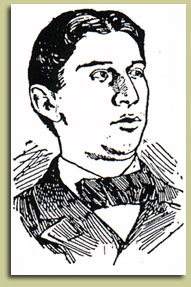 Yet, it is in a Cleveland Plain Dealer editorial the next day after the announcement, on January 18, 1915, that the name of Louis Sockalexis is recalled and credited for being the inspiration for the original nickname.
Yet, it is in a Cleveland Plain Dealer editorial the next day after the announcement, on January 18, 1915, that the name of Louis Sockalexis is recalled and credited for being the inspiration for the original nickname.
The editorial read: “Many years ago there was an Indian named Sockalexis who was the star player of the Cleveland baseball club. As batter, fielder and base runner he was a marvel. Sockalexis so far outshone his teammates that he naturally came to be regarded as the whole team. The ‘fans’ throughout the country began to call the Clevelanders the ‘Indians.’ It was an honorable name, and while it stuck the team made an excellent record.
“It has now been decided to revive this name. The Clevelands of 1915 will be the ‘Indians.’ There will be no real Indians on the roster, but the name will recall fine traditions. It is looking backward to a time when Cleveland had one of the most popular teams of the United States. It also serves to revive the memory of a single great player who has been gathered to his fathers in the happy hunting grounds of the Abenakis.”
The sad fact, today, is that too many so-called “creditable” media voices aren’t interested in being educated, aren’t interested in setting records straight, frankly aren’t interested in baseball history that exceeds their own lifetimes. Need proof?
Take Craig Calcaterra. Go to the Google search engine, type in the name “Louis Sockalexis,” and the fifth entry for Sock on the very first page will be Calcaterra’s November of 2013 article entitled “The Indians are still peddling the bogus Louis Sockalexis story.” He will inform you, to use his words, that it is “total bunk” that Sockalexis inspired the nickname… and, quite tiresomely at this point, he will speculate the nickname’s origins owe more to the success of the Braves, as merely suggested in the cartoon.
More recently, Joe Posnanski, a former senior writer at Sports Illustrated, published a national blog of thousands upon thousands of words on the topic of Sockalexis and the Indians nickname, ultimately concluding there was no evidence a connection could be made. When both Robert DiBiasio, vice president of public affairs for the Cleveland Indians, and I contacted Posnanski, with the above editorial proof, he published a brief addendum, of merely a handful of sentences, admitting his error. Well, at least, he apologized…
As much as I enjoy and often agree with his acerbic rants, popular ESPN-TV commentator Keith Olbermann doesn’t seem to know or appreciate the gallant stand Sockalexis made against the virulent racism of his era or how incredibly skilled he was at the game. Both he and former State University of New York at Ithaca Associate Professor Ellen Staurowsky do aid the cause of condemning Cleveland’s pro baseball team for its continuing use of Chief Wahoo. But there are important “buts.” Olbermann mischievously, satirically says the team should call itself the “Cleveland Sockalexis” but never-ever makes clear to his viewers that it isn’t just American Indians who are being treated disrespectfully; the man supposedly being “honored” through the use of a nickname is, at the very same time, being tragically demeaned through the use of its racist logo.
For her part, Staurowsky thoroughly researches all elements of commercial exploitation; however, as a potential candidate for Olbermann’s “Worst Person of the Day,” this so- called “academician” sorrowfully fails to research the historical figure of Sockalexis relying, instead, on a poor Maine schoolgirl’s (named Trina Wellman) paper to arrive at the conclusion that Sockalexis isn’t of enough significance to properly research, based largely on how few games he played. Wellman’s paper, for instance, tells us thoroughly ridiculous things like Sockalexis never struck out in a professional game (in just his fifth professional game he struck out three times) and that he married (he never did).
SI, ESPN and more get it so wrong
Of course, these few individuals are far from alone in their disrespect. Sports Illustrated has published two error-riddled articles on Sockalexis over the past 40 years that it seems to have no interest in correcting and still refuses to apologize for leaving him off a list celebrating Maine’s 50 greatest athletes when anyone with any sense of history would understand he belongs in top five, if not at the very top. Scott Novak, SI’s long-time public relations representative, and a team of editors at the magazine have received complaints about its disrespect and encouragements to revisit the story, not only from this writer but from an entire class of students in John Bear Mitchell’s Native American Studies class at the University of Maine at Orono. All have been met with silence.
And ESPN, with its array of 20-somethings and 30-somethings in age who clearly have no idea that there is a sports history older than they are, failed to understand that Sockalexis belongs on Maine’s Mount Rushmore of four greatest athletes. This was a promotion the self-proclaimed “Worldwide Leader” did a few years ago for all 50 states. Three of ESPN’s selections for Maine are, simply, absurd. It selected: collegiate and professional hockey great Paul Kariya who, unfortunately, isn’t from Maine; Cindy Blodgett, the extraordinary schoolgirl and college basketball star who sat on the bench when challenged with playing with her peers at the highest levels of the game; and, equally incongruous, slick-fielding Mike Bordick, a one-dimensional professional baseball player. Only Joan Benoit Samuelson is an honest rival for such an honor with Sockalexis.
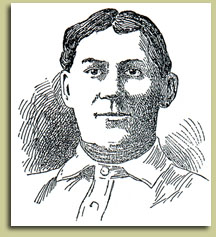 Here in Maine, sadly, we haven’t done much better. Maine author and long-time broadcaster, the late Don MacWilliams, missed the boat completely in his brief biography of Sockalexis when he alleged Sock didn’t inspire the nickname “Indians” in 1897 because the team already had the nickname to start the season; MacWilliams didn’t recognize the nickname caught on in spring training. Further, the Maine Sports Hall of Fame, begun in the early 1970s, completely overlooked Louis Sockalexis’s achievements for nearly 15 years and then tossed him into their hall as an afterthought, after his cousin, the Olympic Marathon runner Andrew Sockalexis, was inducted the previous year. Louis Sockalexis should be a charter member of any Maine Sports Hall of Fame, just as he is a charter member of the Holy Cross College Hall of Fame, when it was created in 1956. Period.
Here in Maine, sadly, we haven’t done much better. Maine author and long-time broadcaster, the late Don MacWilliams, missed the boat completely in his brief biography of Sockalexis when he alleged Sock didn’t inspire the nickname “Indians” in 1897 because the team already had the nickname to start the season; MacWilliams didn’t recognize the nickname caught on in spring training. Further, the Maine Sports Hall of Fame, begun in the early 1970s, completely overlooked Louis Sockalexis’s achievements for nearly 15 years and then tossed him into their hall as an afterthought, after his cousin, the Olympic Marathon runner Andrew Sockalexis, was inducted the previous year. Louis Sockalexis should be a charter member of any Maine Sports Hall of Fame, just as he is a charter member of the Holy Cross College Hall of Fame, when it was created in 1956. Period.
Ultimately, however, I have come to this conclusion: We, in Maine, can’t let all these failures around the country and even here to properly recognize Louis Sockalexis stop us from doing right by him. As my friend, John Bear Mitchell, Passamaquoddy actor, storyteller and academician, taught me: “The circle starts from the inside, not the outside.” We can reverse the trend ourselves, perhaps starting with the building of a statue.
Consider this: USA Today once reported that there is one and only one important baseball-related landmark in the state of Maine, from 61 sites it specifically identified, that people from all around the country should visit if they are baseball fans. That is the gravesite of Louis Sockalexis with its plaque and the crossed bats and baseball. And people do come to Sock’s gravesite, often leaving baseballs behind in tribute to him.
If we build the statue, they will, indeed, continue to come to Maine and find that, as a state, we do have proper appreciation for him and do know how to properly honor him.